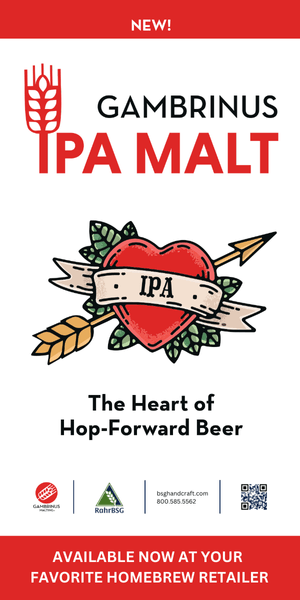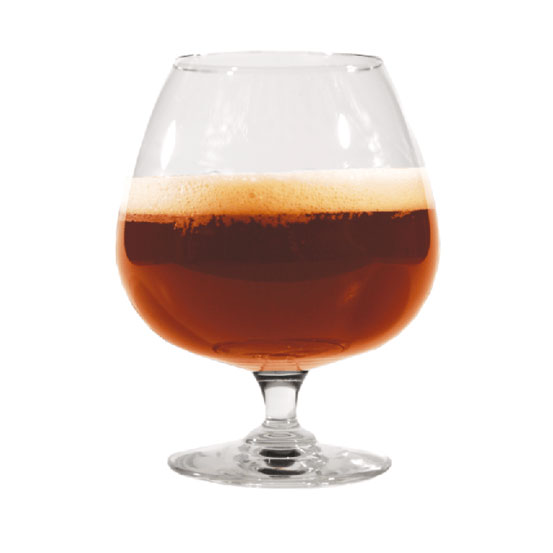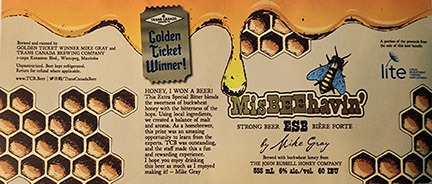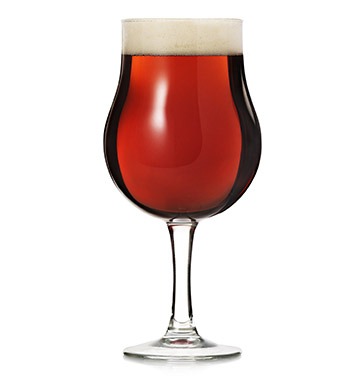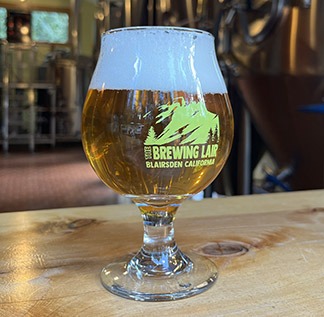Bohemian Pilsner
Bohemian Pilsener
(5 gallons/19 L, all-grain) OG = 1.056 (13.9 °P) FG = 1.016 (4.2 °P) IBU = 40 SRM = 4 ABV = 5.3%
Ingredients
10.75 lb. (4.8 kg) Durst continental Pilsner malt (or similar) (2 °L)
0.75 lb. (340 g) Briess Carapils® malt (or similar) (2 °L)
4.83 AAU Czech Saaz hops (60 min.) (1.38 oz./39 g at 3.5% alpha acids)
5.8 AAU Czech Saaz hops (30 min.) (1.67 oz./47 g at 3.5% alpha acids)
2.9 AAU Czech Saaz hops (10 min.) (0.83 oz./24 g at 3.5% alpha acids)
2.9 AAU Czech Saaz hops (0 min.) (0.83 oz./24 g at 3.5% alpha acid)
White Labs WLP800 (Pilsner Lager), Wyeast 2001 (Pilsner Urquell H-Strain) or Fermentis Saflager S-23 yeast
Step by Step
Mill the grains and dough-in targeting a mash of around 1.5 quarts of water to 1 pound of grain (a liquor-to-grist ratio of about 3:1 by weight) and a temperature of 154 °F (68 °C). Hold the mash at 154 °F (68 °C) until enzymatic conversion is complete. Infuse the mash with near boiling water while stirring or with a recirculating mash system raise the temperature to mash out at 168 °F (76 °C). Sparge slowly with 170 °F (77 °C) water, collecting wort until the pre-boil kettle volume is around 6.5 gallons (25 L) and the gravity is 1.044 (10.9 °P).
The total wort boil time is 90 minutes, which helps reduce the SMM (S-methyl methionine) present in the lightly-kilned Pilsner malt and results in less DMS (Dimethyl Sulfide) in the finished beer. Add the first hop addition with 60 minutes remaining in the boil. The other hop additions are at 30, 10, and zero minutes left in the boil. Add Irish moss or other kettle finings with 15 minutes left in the boil.
Chill the wort to 50 °F (10 °C) and aerate thoroughly. The proper pitch rate is 20 grams of properly rehydrated dry yeast, four packages of liquid yeast or one package of liquid yeast in a 9-liter starter.
Ferment around 50 °F (10 °C) until the yeast drops clear. With healthy yeast, fermentation should be complete in two weeks or less, but don’t rush it. Cold fermented lagers take longer to ferment than ales or lagers fermented at warmer temperatures. If desired, perform a diacetyl rest during the last few days of active fermentation.
Rack the finished beer to a keg and force carbonate or rack to a bottling bucket, add the priming sugar, and bottle. Target a carbonation level of 2 to 2.5 volumes.
A month or more of cold conditioning at near freezing temperatures will mellow some of the flavors and improve the beer. Serve at 43 to 46 °F (6 to 8 °C).
Bohemian Pilsener
(5 gallons/19 L, extract only) OG = 1.056 (13.9 °P) FG = 1.016 (4.2 °P) IBU = 40 SRM = 4 ABV = 5.3%
Ingredients
8 lb. (3.6 kg) Briess Pilsen liquid malt extract
4.83 AAU Czech Saaz hops (60 min.) (1.38 oz./39 g at 3.5% alpha acids)
5.8 AAU Czech Saaz hops (30 min.) (1.67 oz./47 g at 3.5% alpha acids)
2.9 AAU Czech Saaz hops (10 min.) (0.83 oz./24 g at 3.5% alpha acids)
2.9 AAU Czech Saaz hops (0 min.) (0.83 oz./24 g at 3.5% alpha acid)
White Labs WLP800 (Pilsner Lager), Wyeast 2001 (Pilsner Urquell H-Strain) or Fermentis Saflager S-23 yeast
Step by Step
Making an extract version of this beer couldn’t be easier if you have access to Briess Pilsen malt extract. The Briess Pilsen extract contains both Pilsner malt and Carapils®. Use an appropriate amount of dried extract if you can’t get the liquid version. If you can’t get Briess extract, any fresh, high quality light color extract made from Pilsner malt will work well. Always choose the freshest extract that fits the beer style.
Add enough water to the malt extract to make a pre-boil volume of 6.5 gallons (25 L) and the gravity is 1.044 (10.9 °P). Stir thoroughly to dissolve the extract and bring to a boil.
The total wort boil time is 90 minutes. Add the first hop addition with 60 minutes remaining in the boil. The other hop additions are at 30, 10, and zero minutes left in the boil. Add Irish moss or other kettle finings with 15 minutes left in the boil.
Chill the wort to 50 °F (10 °C) and aerate thoroughly. The proper pitch rate is 20 grams of properly rehydrated dry yeast, four packages of liquid yeast or one package of liquid yeast in a 9-liter starter.
Ferment around 50 °F (10 °C) until the yeast drops clear. With healthy yeast, fermentation should be complete in two weeks or less, but don’t rush it. Cold fermented lagers take longer to ferment than ales or lagers fermented at warmer temperatures. If desired, perform a diacetyl rest during the last few days of active fermentation.
Rack the finished beer to a keg and force carbonate or rack to a bottling bucket, add the priming sugar, and bottle. Target a carbonation level of 2 to 2.5 volumes.
A month or more of cold conditioning at near freezing temperatures will mellow some of the flavors and improve the beer. Serve at 43 to 46 °F (6 to 8 °C).

